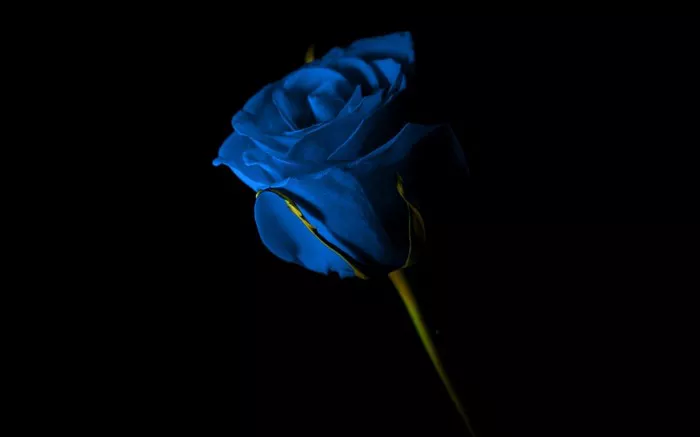In the vast realm of flora, the blue rose stands as an enigmatic and rare gem, captivating hearts with its elusive beauty. Unlike its more common counterparts, the blue rose has long been a symbol of mystery, mystique, and the unattainable. As we delve into the depths of botanical fascination, this article seeks to unravel the meaning and symbolism woven into the delicate petals of the elusive blue rose.
Historical Perspective
To comprehend the significance of the blue rose, one must first embark on a journey through history. The blue rose, unlike its red, white, or yellow counterparts, is not a naturally occurring phenomenon. Throughout the ages, various cultures have strived to cultivate a true blue rose, often with limited success. In many societies, the blue rose has come to symbolize the pursuit of the unattainable, a quest for the impossible.
Cultural Symbolism
The blue rose, though rare in nature, has found its way into the cultural tapestry of diverse societies. In literature and art, it is often employed as a metaphor for the mysterious and the unexplored. The deep, captivating hue of the blue rose has inspired poets and artists alike, serving as a symbol of the ineffable and the surreal.
In Eastern cultures, particularly in Japan, the blue rose takes on a unique significance. Here, it is associated with the unattainable or the mysterious beauty that one can never truly possess. In the language of flowers, or floriography, the blue rose communicates a sense of mystery and intrigue, making it a popular choice for conveying complex emotions and unspoken desires.
The Quest for the Blue Rose
The elusive nature of the blue rose has fueled the human desire to conquer the unconquerable. Botanists and horticulturists have dedicated years to the pursuit of breeding a true blue rose. The scientific community’s attempts to manipulate pigments and create a genetically blue rose have been met with numerous challenges, highlighting the intricate complexities of nature.
In the realm of genetic engineering, the blue rose has become a symbol of the boundaries and ethical dilemmas that scientists face. The quest for the blue rose prompts profound questions about the manipulation of nature and the consequences of pushing the limits of genetic modification.
Romantic Connotations
In the language of love, roses have always played a prominent role, each color carrying its own nuanced meaning. The blue rose, being a rarity, has taken on a romantic connotation that goes beyond the ordinary expressions of love. It symbolizes the unique and extraordinary nature of an individual’s affections, a love that transcends the commonplace and reaches into the realm of the extraordinary.
The blue rose is often associated with the unattainable love, reminiscent of a fairy tale romance where the hero strives to win the heart of an ethereal and elusive maiden. In this context, the blue rose becomes a symbol of eternal, unrequited, or even forbidden love.
Cultural Adaptations and Modern Symbolism
As we navigate through the modern era, the meaning of the blue rose has adapted to contemporary contexts. In the world of technology and digital communication, the blue rose has found a new life as an emoji and a symbol in virtual spaces. It has become a representation of the unique and extraordinary in the vast landscape of the internet, serving as a metaphor for the rare and exceptional.
In pop culture, the blue rose has made appearances in literature, movies, and music, each time carrying its own unique significance. From classic novels to blockbuster films, the blue rose has become a symbol that transcends its botanical roots, taking on meanings that resonate with diverse audiences.
Challenges and Controversies
While the quest for the blue rose has led to advancements in genetic engineering, it has also sparked debates and controversies. Ethical concerns surrounding the manipulation of nature and the potential consequences of creating genetically modified organisms have come to the forefront. The blue rose stands as a symbol of the delicate balance between human innovation and the preservation of the natural order.
Furthermore, some argue that the very essence of the blue rose lies in its rarity and the impossibility of its natural existence. Attempts to artificially produce the blue rose may diminish its symbolic value, turning it from a representation of the unattainable into a mere commodity.
Conclusion
In the vast garden of symbolism, the blue rose emerges as a singular bloom, captivating hearts and minds with its mysterious allure. From the echoes of ancient cultures to the debates of modern science, the blue rose continues to evoke fascination and contemplation.
As we navigate the complexities of its meaning, the blue rose invites us to ponder the nature of desire, the pursuit of the unattainable, and the delicate balance between human innovation and the sanctity of nature. In its elusive petals, the blue rose remains a timeless symbol that transcends cultural boundaries, weaving a narrative of mystery and beauty that continues to enchant and inspire.


